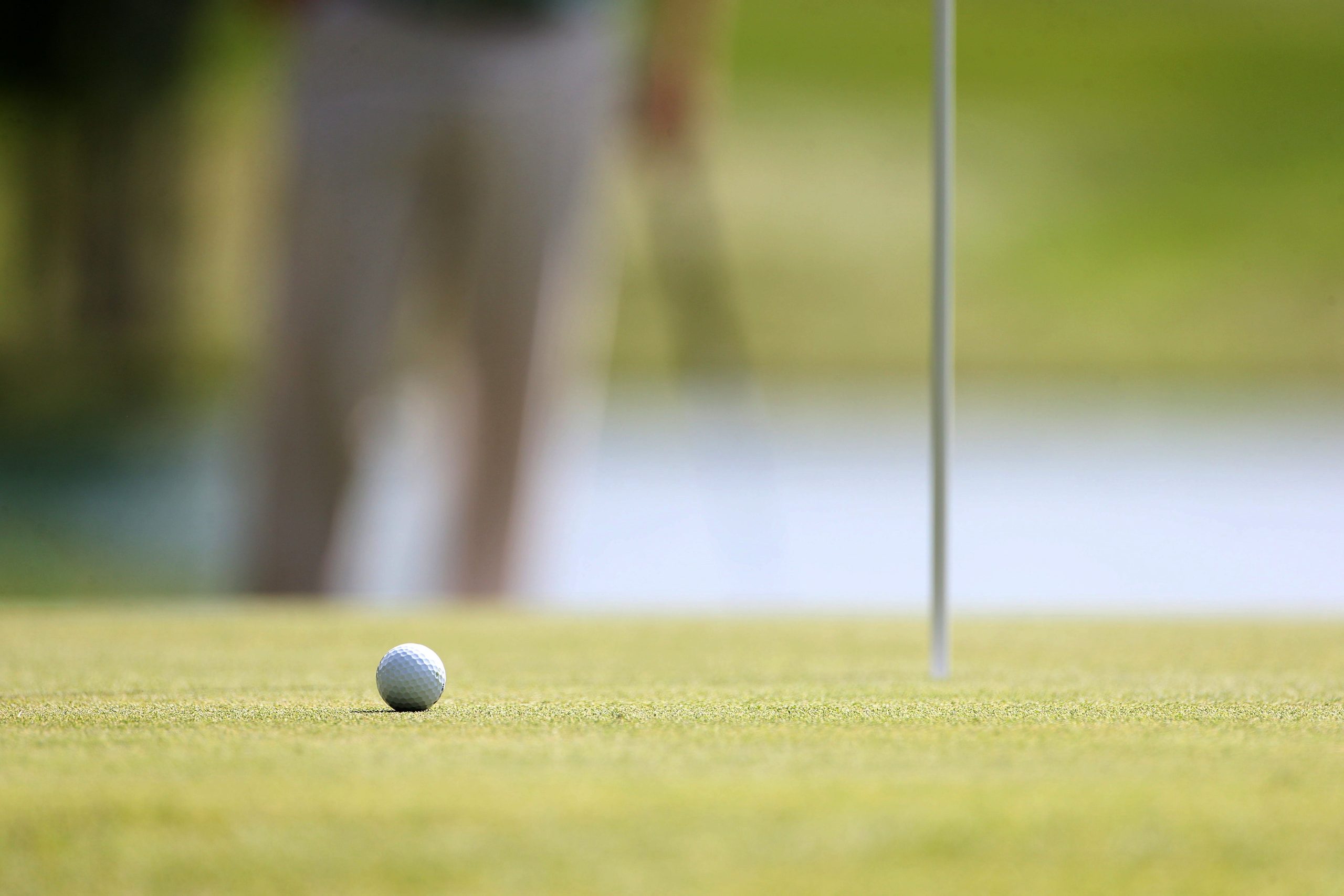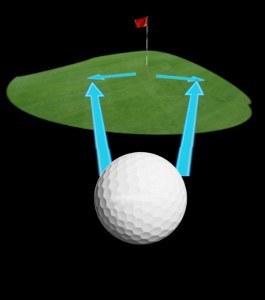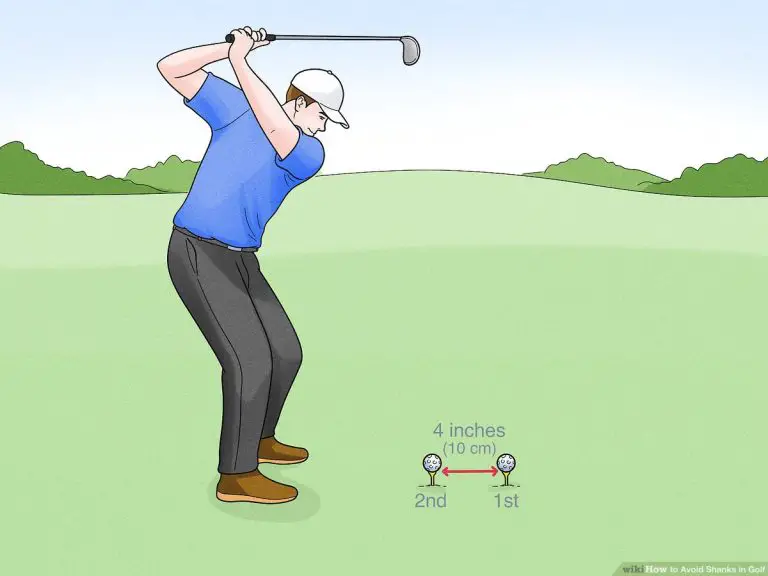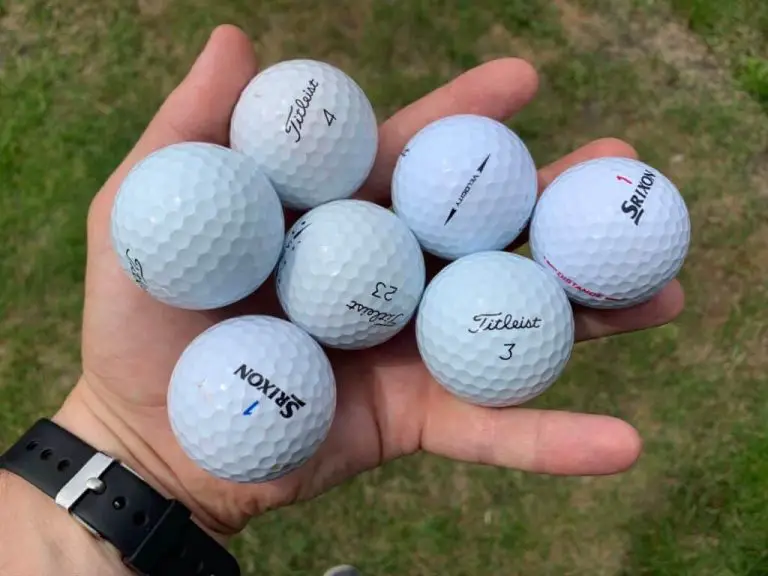What Does Pin High Mean In Golf

Welcome to the captivating world of golf, where precision, strategy, and skill converge to create a challenging and rewarding game. As you navigate the fairways and greens, you may come across a term that carries great significance in the sport: “pin high.” In this comprehensive guide, we will unravel the meaning and implications of “pin high” in golf, shedding light on its importance and how it influences a golfer’s strategy and performance on the course.
“Pin high” is a term frequently used by golfers and commentators alike, and it holds a special place in the lexicon of the game. But what exactly does it mean? Put simply, being “pin high” refers to the position of a golf shot in relation to the flagstick on the green. It signifies that the shot has landed at a distance equal to that of the hole, aligning perfectly with the location of the flagstick.
Understanding the concept of “pin high” is crucial for golfers of all skill levels. It represents a pinnacle of accuracy and distance control, allowing players to position their shots optimally for a successful putt. Whether you’re a beginner or a seasoned golfer, grasping the intricacies of being “pin high” will enhance your strategic thinking, shot selection, and ultimately, your overall performance on the course.
Join us as we delve into the depths of “pin high” in golf, exploring its nuances, impact, and the strategies employed to achieve this coveted position. By the end of this guide, you’ll possess a comprehensive understanding of what it truly means to be “pin high” and how you can harness this knowledge to elevate your game to new heights. So, let’s tee off and uncover the secrets of this essential aspect of golfing precision.

What is the Definition of “Pin High”?
In the language of golf, “pin high” refers to the position of a golf shot in relation to the hole or the location of the flagstick on the green. When a shot is described as being “pin high,” it means that it has reached a distance level parallel to the hole, aligning with the position of the flagstick. Essentially, it implies that the shot has come to rest at the same distance or yardage as the flagstick, regardless of whether it is to the left, right, or directly in line with the hole.
Achieving a shot that is “pin high” is considered a desirable outcome for golfers. It indicates accuracy and distance control, allowing for better opportunities to make successful putts and potentially score lower on the hole.
How Does “Pin High” Relate to Approach Shots?
The concept of being “pin high” is most commonly associated with approach shots. An approach shot is a stroke played from a distance away from the green with the objective of landing the ball on or near the putting surface. Accuracy and distance control are crucial elements in executing a successful approach shot.
When golfers aim to be “pin high” with their approach shots, they are seeking to land the ball at a distance that matches the position of the flagstick. By achieving this, they give themselves the best chance of having a relatively short putt for birdie or par, increasing their chances of scoring well on the hole.
What Factors Influence a Shot Being “Pin High”?
Several factors come into play when determining whether a shot will end up being “pin high” or not. Let’s explore some of the key factors that influence the outcome of a shot:
1. Club Selection
The choice of club is crucial in determining the distance and trajectory of the shot. Different clubs have varying degrees of loft and distance potential. Selecting the appropriate club for the desired distance is essential in achieving the desired “pin high” outcome.
2. Swing Technique
The golfer’s swing technique, including swing speed, angle of attack, and release, can significantly impact the distance and accuracy of the shot. Consistency and precision in the swing contribute to achieving a shot that is “pin high.”
3. Course Conditions
Course conditions, such as wind direction and speed, firmness of the fairways and greens, and elevation changes, can affect the distance and accuracy of a shot. Golfers need to consider these factors and make necessary adjustments to land their shots “pin high.”
4. Green Firmness and Pin Placement
The firmness of the green and the location of the pin on the green also play a role in determining the desired “pin high” distance. Firm greens may require shots with more spin to control the landing and prevent excessive roll. Pin placement, whether it’s at the front, middle, or back of the green, affects the target distance for a shot to be “pin high.”
Understanding and accounting for these factors can greatly enhance a golfer’s ability to consistently hit shots that are “pin high” and give themselves optimal opportunities for successful putts.
Understanding the Benefits of Being “Pin High”
Being “pin high” on the golf course can offer several advantages to a golfer. Let’s explore some of the benefits associated with achieving a shot that is “pin high”:
1. Increased Scoring Opportunities
When a golfer lands their approach shot “pin high,” it puts them in an advantageous position to make a successful putt. Being at the same distance as the flagstick allows for a relatively shorter putt, reducing the overall difficulty of the putt and increasing the likelihood of sinking it for a birdie, par, or better.
2. Better Distance Control
Hitting shots that are “pin high” requires precise distance control. Golfers who consistently achieve this level of accuracy develop a strong sense of their own yardages and become proficient in controlling their club selection and swing to land the ball consistently at the desired distance. This level of distance control can greatly improve a golfer’s overall performance.
3. Avoidance of Difficult Putts
Landing a shot “pin high” reduces the chances of facing challenging putts. Shots that are too long or too short of the pin can leave golfers with more difficult putts due to the undulations and slopes of the green. By being “pin high,” golfers can avoid putting themselves in unnecessarily difficult situations on the green.
4. Increased Confidence
Consistently achieving shots that are “pin high” instills confidence in a golfer’s ability to execute accurate approach shots. Confidence plays a vital role in performance, as it allows golfers to focus on their game plan and make decisive shots without hesitation.
5. Competitive Advantage
In competitive golf, being “pin high” can provide a competitive edge. It puts pressure on opponents to match the accuracy and precision of a golfer who consistently hits shots at the desired distance. Being “pin high” showcases a golfer’s control over their game and can lead to better scoring differentials against competitors.
By understanding the benefits of being “pin high” and consistently striving to achieve this level of accuracy, golfers can significantly improve their performance on the course and enhance their scoring potential.
Strategies for Achieving a “Pin High” Shot
Achieving the desired “pin high” outcome requires a combination of skill, practice, and course management. Here are some strategies that can help golfers improve their ability to hit shots that are “pin high”:
1. Develop Distance Control
To consistently hit shots that are “pin high,” golfers should focus on developing their distance control skills. This can be accomplished through practice and repetition, along with an understanding of individual club distances and swing techniques. Working with a qualified golf instructor can provide valuable guidance on achieving precise distance control.
2. Study Course Conditions
Understanding the factors that affect ball flight and course conditions is essential in determining the appropriate club selection and shot execution. Factors such as wind direction, elevation changes, and green firmness can impact the distance a ball travels and its ability to stop near the desired target. By studying and adapting to these conditions, golfers can increase their chances of hitting shots “pin high.”
3. Focus on Green Reading
Accurate green reading plays a crucial role in achieving shots that are “pin high.” Understanding the slopes, undulations, and speed of the greens helps golfers select their landing areas and anticipate how the ball will react once it lands. Taking the time to analyze the green before each approach shot can significantly improve distance control and accuracy.
4. Practice Short Game Techniques
The short game, including chipping, pitching, and putting, is vital in achieving shots that are “pin high.” Developing a solid short game allows golfers to control the ball’s trajectory, spin, and roll upon landing, leading to greater accuracy in approaching the desired distance. Regular
practice of short game techniques, such as different types of chips, pitches, and bunker shots, can enhance a golfer’s ability to hit shots “pin high.”
5. Utilize Course Management Strategies
Strategic course management can play a significant role in hitting shots that are “pin high.” This involves assessing the layout of the hole, understanding the positioning of hazards, and selecting target areas that provide the best angle and distance for approach shots. By carefully planning their shots and executing them with precision, golfers can increase their chances of achieving the desired “pin high” outcome.
6. Develop a Consistent Pre-shot Routine
Establishing a consistent pre-shot routine helps golfers maintain focus and execute shots with confidence. By incorporating specific steps such as visualization, alignment, and breathing exercises, golfers can create a mental and physical routine that promotes accuracy and distance control. A well-practiced routine enhances consistency and increases the likelihood of hitting shots “pin high.”
7. Pay Attention to Feedback
Feedback is crucial in honing distance control and accuracy. Golfers should pay close attention to the results of their shots, noting the distance achieved and the ball’s proximity to the desired target. This feedback helps in fine-tuning swing mechanics, club selection, and other factors that influence achieving shots “pin high.”
8. Play Simulated Rounds and Practice Scenarios
Simulating on-course scenarios during practice sessions can be highly beneficial in improving the ability to hit shots “pin high.” This can involve playing simulated rounds on the practice range, visualizing specific hole layouts, and targeting specific landing areas to match pin locations. By practicing in a realistic environment, golfers can develop the skills and confidence necessary to execute shots accurately on the course.
Remember, achieving shots that are consistently “pin high” requires dedication, practice, and a deep understanding of your own game. By implementing these strategies and focusing on distance control, accuracy, and course management, golfers can enhance their ability to hit shots that land at the desired distance and improve their overall performance on the golf course.
Conclusion
Being “pin high” in golf is a desirable outcome that showcases a golfer’s accuracy, distance control, and ability to navigate the challenges of the game. By understanding the concept of “pin high” and implementing strategies to achieve this goal, golfers can increase their scoring opportunities, avoid difficult putts, and gain a competitive edge.
Practice, study the course conditions, and focus on developing a consistent swing and pre-shot routine. With time and dedication, hitting shots that are “pin high” will become a natural part of your game, leading to improved scores and a greater sense of accomplishment on the golf course. So, embrace the challenge, refine your skills, and aim for precision as you strive to consistently achieve shots that are “pin high.”




